Integrated Neuro-Movement Programs
#1 Brain Able Programs
Research has shown that these conditions and symptoms may be linked to weak connections across different regions of the brain: Different learning difficulties do not correspond to specific regions of the brain, as previously thought, say researchers. Instead, poor connectivity between ‘hubs’ within the brain is much more strongly related to children’s difficulties.
ADHD/ADD
Sensory Processing
Anxiety
Autism spectrum disorder (ASD)
Tourette Syndrome
Brain Injuries
Learning difficulties:
Learning difficulties: (Dyslexia: Learning disabilities in reading; Dyscalculia: Learning disabilities in math; Dysgraphia: Learning disabilities in writing; Dyspraxia: Learning disabilities in motor skills
Fortunately, we know that the brain can modify its connections or re-wire itself and form new information pathways (Neuroplasticity). This may lead to improvement in symptoms, helping you reach your full potential to thrive in life instead of just coping.
Each program is based on an Entire-Brain approach, specifically designed for each client’s needs and development level, building progressively as they advance, with one-on-one Sessions and home-based activities, and integrated with rhythmic training programs to challenge the brain through vision, auditory and timing activities.
We at BrainMovers do not clinically diagnose any medical condition, we also don’t need a formal diagnosis from a medical physician. We focus on understanding the difficulties your child experience and design Neuro-Movement activities to help develop and strengthen important connections in the brain, so that they can reach their full potential and thrive in life.


The best way to think of ADD is not as a mental disorder, but as a collection of traits and tendencies that define a way of being in the world.
– Edward M Hallowell, M.D.
#2 Let’s Thrive again – Programs
If your child does not have a medical diagnosis and is struggling academically, behaviourally, or socially with the following:
We might be able to help your child reach their full potential and thrive.
Research has shown that these conditions and symptoms may be linked to weak connections across different regions of the brain: Different learning difficulties do not correspond to specific regions of the brain, as previously thought, say researchers. Instead poor connectivity between ‘hubs’ within the brain is much more strongly related to children’s difficulties.
Attention
Easily distracted
Task avoidance
Impulsiveness
Time management
Organization
Forgetfulness
Behavioural challenges
Motor and Sensory Challenges
Reading
Handwriting
Fortunately, we know that the brain has the ability to modify its connections or re-wire itself and form new information pathways (Neuroplasticity). This may lead to improvement in symptoms, helping you reach your full potential to thrive in life instead of just coping.
Each program is based on an Entire-Brain approach, specifically designed for each client’s needs and development level, building progressively as they advance, with one-on-one Sessions and home-based activities, and integrated with rhythmic training programs to challenge the brain through vision, auditory and timing activities.
We at BrainMovers do not clinically diagnose any medical condition, we also don’t need a formal diagnosis from a medical physician. We focus on understanding the difficulties your child experience and design Neuro-Movement activities to help develop and strengthen important connections in the brain, so that they can reach their full potential and thrive in life.
We at BrainMovers do not clinically diagnose any medical condition, nor do we need a formal diagnosis. We focus on understanding the difficulties your child experience and design Neuro-Movement activity programs to help develop and strengthen important connections in the brain, so that they can reach their full potential and thrive in life
#3 Adult/Corporate Program
When your brain is functioning at its best, it sets you up to perform at your best.
Do you struggle with your memory, get easily distracted and can’t focus. Do you want to improve your stress and mood management…
BrainMovers designed Integrated Neuro-Movement programs for adults. The program is designed to help you strengthen and improve your brain’s functioning with physical, sensory, and cognitive activities.
We can assist with improving your:
Cognitive functions:
– Focus
– Memory
– Reasoning
Executive Functions:
– Behaviours
– Emotions
– Organizations
– Problem solving
Research has shown that that poor Cognitive and Executive functions of the brain may be linked to weak connections across different regions of the brain.
Fortunately, we know that the brain has the ability to modify its connections or re-wire itself and form new information pathways (Neuroplasticity). This may lead to improvement in symptoms, helping you reach your full potential to thrive in life instead of just coping.
Each program is based on an Entire-Brain approach, specifically designed for each client’s needs and development level, building progressively as they advance, with one-on-one Sessions and home-based activities, and integrated with rhythmic training programs to challenge the brain through vision, auditory and timing activities.
We at BrainMovers do not clinically diagnose any medical condition, we also don’t need a formal diagnosis from a medical physician. We focus on understanding the difficulties your child experience and design Neuro-Movement activities to help develop and strengthen important connections in the brain, so that they can reach their full potential and thrive in life.
Adults of all ages and occupations can benefit from the program.
#4 Group Developmental
Neuro-MOVEMENT Programs
Although our focus is mostly patient specific, and one on one based, we also looked at a Neuro-Movement Developmental Programs designed to help integrate primary reflexes and systems, for the pre- or primary schools, as a way of preventing barriers to learning.
These Group Developmental Movements have shown to improve:
– Focus
– Handwriting
– Midline Crossing
– Differentiation
– Interhemispheric functioning
We at BrainMovers do not clinically diagnose any medical condition, we also don’t need a formal diagnosis from a medical physician. We focus on understanding the difficulties your child experience and design Neuro-Movement activities to help develop and strengthen important connections in the brain, so that they can reach their full potential and thrive in life.
#5 Virtual programs
The BrainMovers Program is an at-home program designed for children, teens, and adults.
How do these programs work:
Virtual assessment
Weekly 1:1 virtual video calls
Home-based activities each day
Program specifically designed for your need
For 3-months
Kit available
Research has shown that that poor Cognitive and Executive functions of the brain may be linked to weak connections across different regions of the brain.
Fortunately, we know that the brain has the ability to modify its connections or re-wire itself and form new information pathways (Neuroplasticity). This may lead to improvement in symptoms, helping you reach your full potential to thrive in life instead of just coping.
We at BrainMovers do not clinically diagnose any medical condition, we also don’t need a formal diagnosis from a medical physician. We focus on understanding the difficulties your child experience and design Neuro-Movement activities to help develop and strengthen important connections in the brain, so that they can reach their full potential and thrive in life.
#6 Toddler Reflex Evaluation program
New-born reflexes in the first moments and even months of life form the building blocks of future development. Movement that starts out as a reflex soon turns into purposeful, cognitive and physical activity. Your health care provider will test your new-born for these reflexes soon after birth and again at your first check-ups. We test primitive reflexes around the age of 1 and older. If these Reflex are stimulated, the movement pattern is expressed. The Process is repeated as the reflex develop. A Primitive Reflex is integrated once it emerged into another reflex or into a more sophisticated, voluntary movement pattern.
The Reflex movements assist the neuro-sensory-motor system to grow and function effectively and lay the foundation for future motor, learning and social-emotional skills. Integrating reflexes is key for the ability to learn easily, manage our emotions and meet life’s challenges with greater ease.
The sooner we test these the earlier we would know where to focus and work on.
Programs consist of
1. Intensive Assessment:
Our first step is to understand and identify the root causes behind your child’s challenges with our intensive assessment.
2. Integrated Neuro-Movement Programs:
Innate Rhythmic movements
Primitive Reflexes
Integration of Systems
2. a) Innate Rhythmic Movement:
Rhythmic movements are based on natural, spontaneous baby movements. Stimulation from rhythmic movements in the first year of life is fundamental for the development and maturation of the brain, body and sensory systems. The innate rhythmical baby movements done in the first year of life, give the brain the stimulation required for maturation and for connectivity between parts of the brain. When there is not enough brain stimulation during this early stage of life, it can result in in a compromised ability to process sensory information and access the cortex. Access to the cortex is the basis for many skills such as focusing, control of impulses, managing the emotions, abstract thinking, learning, planning, making decisions and communication.
2. b) Primitive Reflexes:
Primitive Reflexes are the involuntary motor responses originating in the brainstem and should only remain active for the first few months of life. These reflexes are stimulated, and the movement pattern is expressed. The Process is repeated as the reflex develop. A Primitive Reflex is integrated once it emerged into another reflex or into a more sophisticated, voluntary movement pattern. The Reflex movements assist the neuro-sensory-motor system to grow and function effectively and lay the foundation for future motor, learning and social-emotional skills. Integrating reflexes is key for the ability to learn easily, manage our emotions and meet life’s challenges with greater ease.
Incomplete integration or retained primitive reflexes can be mild or severe and can may contribute to struggles related to disorders like:
– ADHD/ADD
– sensory processing disorder
– autism
– learning disabilities
– speech disorders
– anxiety
– developmental delay
– behavioural challenges.
2. c) Systems integration:
System integration is the process by which we receive information through our different systems of the body (example senses,) organize this info and use it to participate in everyday activities. We are complex, integrated systems by design, therefore remember that no one activity should be considered as a cure for all disorders. We will focus on activities that will help integration of the following systems of the body:
– Sight (vision)
– Hearing (Auditory)
– Smell (Olfactory)
– Taste (Gustatory)
– Touch (Tactile)
– Vestibular (Movement)
– Proprioception (Body Position)
– Muscle Tone
– Kinaesthesia (sense of relative muscle, joint and tendon movement)
– Ocular Motility (visual tracking, smooth pursuit of eyes)
– Binocularity: teaming of the eyes
– Differentiation
– Lateralization
– Interhemispheric Integration: Communication between the two hemispheres of the brain
Research on Movement and learning:
Motor Predictors of Motor and Cognitive Function
– J P Piek, L Dawson, LM Smith, N Gasson: The role of early fine and gross motor development on later motor and cognitive ability: Human Movement Science, 27(5): 668-81, October 2008
Social Emotional Problems and Motor impairment
– JP Piek, NC Barrett, LM Smith, D Rigoli, N Gasson: Do motor skills in infancy and early childhood predict anxious and depressive symptomatology at school age? : Human Movement Science, 29(5):777-86, October 2010
Research on Reflexes:
- ADHD Symptoms are associated with retained primitive reflexes
Excerpt from University of Western Australia researchers Myra Taylor, Stephen Houghton and Elaine Chapman’s “Primitive Reflexes and Attention-Deficit/Hyperactivity Disorder: Developmental Origins of Classroom Dysfunction” (The International Journal of Special Education,19(1), 2004)
Results indicated that, in general, boys diagnosed with AD/HD had significantly higher levels of reflex retention than non-diagnosed boys. Results also indicated both direct and indirect relationships between retention of the Moro, ATNR, STNR and TLR reflexes with AD/HD symptomatology and mathematics achievement.
- Intervention and Academic Performance
Excerpt from J.-A. Jordan-Black’s “The effects of the Primary Movement programme on the academic performance of children attending ordinary primary school” (Journal of Research in Special Education, 5(3):101–11, 2005)
A comparative study of the progress of 683 children over a two-year period from Years 3 and 5, who completed an intervention programme known as Primary Movement, was carried out using the relative attainments of children at the same schools and standardised scores as baseline and follow-up measures. A second, quasi-experimental study followed the progress of four parallel groups in each of two large schools with the experimental side completing the movement intervention programme while the other side acted as the control.
It was found that ATNR persistence was significantly associated with level of attainments in reading, spelling and mathematics and that boys were more at risk than girls for ATNR persistence. In both studies, it was found that the movement intervention programme had a very significant impact on reducing the levels of ATNR persistence in children and that this was associated with very significant improvements in reading and mathematics, in particular.
This research provides further evidence of a link between the attainment of core educational skills and the interference that may result from an underlying developmental deficit. The effectiveness of the intervention programme in reducing ATNR persistence and in increasing academic attainments suggests that this programme could be used to complement other strategies that have been shown to have a positive effect on children’s learning.
- Reflexes and Reading Difficulties
Excerpt from M. McPhillips, P.G. Hepper and G. Mulhern’s “Effects of replicating primary-reflex movements on specific reading difficulties in children.” (Lancet, 355: 537–41, 2000)
Background: Children with specific reading difficulties have problems that extend beyond the range of underlying language related deficits (e.g., they have difficulties with balance and motor control). We investigated the role of persistent primary reflexes (which are closely linked in the earliest months of life to the balance system) in disrupting the development of reading skills.
Methods: We assessed the efficacy of an intervention programme based on replicating the movements generated by the primary-reflex system during fetal and neonatal life. A randomised, individually matched, double-blind, placebo-controlled design was used and children (aged 8–11 years) with persistent primary reflexes and a poor standard of reading were enrolled into one of three treatment groups: experimental (children were given a specific movement sequence); placebo-control (children were given nonspecific movements); and control(no movements).
Findings: From an initial sample of 98 children, 60 children, 20 in each group were matched on age, sex, verbal intelligence quotient (IQ), reading ability, and persistent asymmetrical tonic neck reflex.
For asymmetrical tonic neck-reflex levels there was a significant (group by time) interaction (p<0.001). The experimental group showed a significant decrease in the level of persistent reflex over the course of the study (mean change -1.8 [95% CI -2.4 to -1.2], p<0.001), whereas the changes in the placebo-control and control groups were not significant (-0.2 [-0.9 to 0.6] and -0.4 [-0.9 to 0.2]).
Interpretation: This study provides further evidence of a link between reading difficulties and control of movement in children. In particular, our study highlights how the educational functioning of children may be linked to interference from an early neurodevelopmental system (the primary-reflex system). A new approach to the treatment of children with reading difficulties is proposed involving assessment of underlying neurological functioning, and appropriate remediation.
- Reflexes and reading performers
Excerpt from M. McPhillips and J.A Jordan-Black’s “Primary Reflex persistence in children with reading difficulties” (Neuropsychologia, 45(4),2007)
The Primary Reflex system emerges during fetal life and is inhibited during the first year after birth. Our aim was to examine the effects of persistence of this early neurological system on the attainment of core literacy skills in dyslexic and non-dyslexic poor readers. We assessed the prevalence of a persistent primary reflex in a cross-sectional, representative sample of children (n=739) aged 7-9 years old attending mainstream primary school in Northern Ireland using standardised educational test and a clinical diagnostic test for a primary reflex. (The Asymmetrical Tonic Neck Reflex – ATNR). Multiple regression analyses, involving sample children, revealed that persistence of the ATNR was significantly predictive of attainments in reading (t = -8.34, p < .001), spelling (t= -8.00, p < .001), non-word reading (t = – 16.15, p , .001), verbal IQ 9t = -4.71, p < .001). ANOVA tests revealed that there were no differences between the performance of dyslexic and nondyslexic poor readers on any of the outcome measures, (reading (F(1,289) = 0.51, p =.48), spelling (F(1,289) = 0.02, p =.90), non-word reading (F(1, 289) = 0.76, p = .38), ATNR level (F(1, 289) = 2,54, p = .11)).
The findings suggests that for many children in mainstream schooling, the attainment of core educational skills may be affected by the persistence of a brain brainstem mediated reflex system that should have been inhibited in the first year of birth. Furthermore, these findings suggest that dyslexia is not a distinct category of poor reading, and that it may be more valid to term all poor readers as dyslexic irrespective of IQ.
- Sensory challenges are associated with retained primitive reflexes
Excerpt from Pecuch, A., Gieysztor, E., Telenga, M., Wolańska, E., Kowal, M., and Paprocka-Borowicz, M.,Primitive Reflex Activity in Relation to the Sensory Profile in Healthy Preschool Children Int. J. Environ. Res. Public Health 2020, 17(21), 8210; https://doi.org/10.3390/ijerph17218210
[Results] indicated that the level of reflex activity was most strongly associated with sensory disorders such as dyspraxia, sensory-vestibular disorders, and postural disorders, at a level of p < 0.005.
- Reflex Integration and Vision
Excerpts from Sally Goddard’s book Reflexes, Learning and Behavior: A Window into the Child’s Mind (Fern Ridge Press, 2005, 111, 128)
A vision therapist working in the Netherlands found that he achieved the greatest success if he delayed vision therapy until a child had at least six months on a reflex stimulation/inhibition program. In many cases, vision therapy was not required after the reflexes had matured. In those cases where residual oculo-motor problems remained, the time needed on a vision therapy program was halved (Ten Hoopen 1995).
In 2001, Bein-Wierzbinski, a former postgraduate student at Institute for Neuro-Physiological Psychology, presented the findings of a study of 52 elementary school children in Germany. She found improvement in oculo-motor functioning and reading skills as persistent reflexes were corrected. Oculo-motor defects continued to persist in the control group, who had not received specific motor-training exercises.
Excerpt from Sergio Ramirez Gonzalez, MS, Kenneth J. Ciuffreda, OD, PhD, Luis Castillo Hernandez, PhD, and Jaimes Bernal Escalante, MS’s “The Correlation between Primitive Reflexes and Saccadic Eye Movements in 5th Grade Children with Teacher-Reported Reading Problems” (Optometry and Vision Development, 39(3): 140–45, 2008)
Background: The objective of the present study was to determine the association, if any, between any remaining primitive reflexes and saccadic eye movements in 5th grade children with teacher-reported reading problems.
Results: The results suggested that selected residual primitive reflexes were correlated with reduced saccadic accuracy and impaired reading ability. In addition, the laboratory-based saccadic testing provided an objective and confirmatory correlate to the presence of abnormal primitive reflexes.
Conclusions: There were significant associations between the saccadic eye movement parameters and the primitive reflexes, especially as related to SR and TLR, in those children with reading problems.





